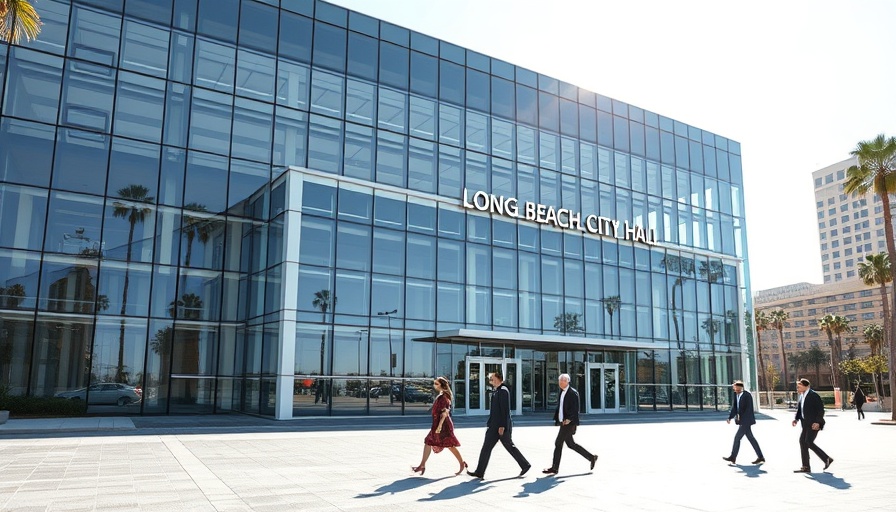
Budget Cuts Raise Concerns for Long Beach’s Ethics Office
The current budget proposal for Long Beach has sparked significant concern among city officials, particularly regarding the potential impacts on the city's Office of Ethics and Transparency. During a City Council meeting on August 5, Barbara Pollack, the Chair of the Ethics Commission, highlighted how proposed budget cuts may severely limit the office's capacity to fulfill its responsibilities.
Shift in Resources: Preparing for the 2028 Olympics
The attempt to reallocate resources to focus on preparations for the upcoming 2028 Los Angeles Olympics has led to a drastic change in staffing for the ethics office. Pollack reported that two-thirds of the assistant to the city manager’s working hours would be diverted from ethical oversight duties to Olympic preparations. With this shift, the office, which currently has just two dedicated staff members, faces a 35% reduction in personnel. This reduction is particularly alarming given the office's existing small size and the demanding nature of its responsibilities.
The Crucial Role of Ethical Training
One of the major concerns voiced by Pollack is the potential halt to critical training programs aimed at educating city employees about ethical conduct. These programs are designed to improve understanding of various issues such as campaign finance, lobbying, and conflicts of interest. Pollack pointed out, "If the training programs fall flat, employees are going to lose the forward momentum," emphasizing how crucial these educational initiatives are for promoting good governance and integrity within the city workforce.
A Growing Demand for Ethics Training
Despite being a relatively new establishment, Long Beach’s ethics office has responded to the rising demand for ethics training by expanding its services, which feature a helpline and an online educational portal. Pollack indicated that these resources have gained popularity, and staffing them adequately is vital to ensure that inquiries receive comprehensive responses. The growing need for well-informed employees to navigate ethical dilemmas is paramount, especially as the city grapples with complex public governance issues.
City Leadership’s Silence on Ethics Funding
In light of these budgetary challenges, the Ethics Commission had previously submitted a request for additional funds to accommodate employee training and possibly secure an additional full-time ethics officer. Pollack noted that their request has been sidelined without formal responses from the City Council. This lack of engagement raises the question of whether the city leadership is fully appreciating the value and necessity of robust ethical oversight.
Balancing Ethics and Financial Constraints
As Long Beach navigates the balance between financial constraints and the imperative of maintaining ethical governance, the office's future appears precarious. The community has worked hard to build trust and integrity among residents and businesses alike. Pollack warned, "This is not the time for Long Beach’s ethics program to stumble," urging the city leaders to reconsider their approach to staffing and funding the ethics office. The implications of these decisions could resonate throughout the community, potentially undermining the established trust that has been painstakingly fostered.
Conclusion: The Path Forward
The outcome of the budget discussions will be critical for the future of ethical governance in Long Beach. As residents continue to advocate for transparent and accountable practices within city operations, the fear remains that diminished resources might hinder the progress achieved thus far.
For those interested in advocating for a more ethical and transparent city government, staying updated on municipal budget decisions related to the Ethics Office can provide crucial insights. Engaging with city council meetings, and expressing concerns through public comment can amplify the message that ethics in government is not only important but essential for the well-being of the community.
 Add Row
Add Row  Add
Add 




Write A Comment